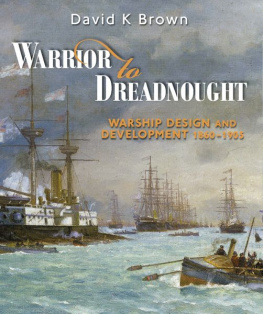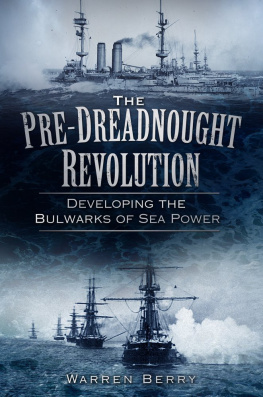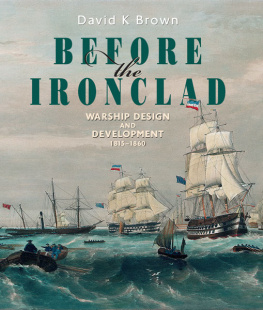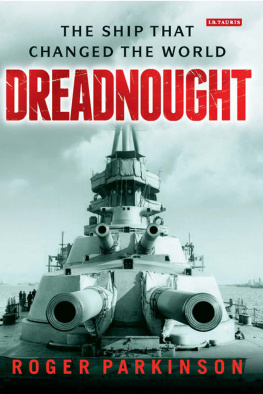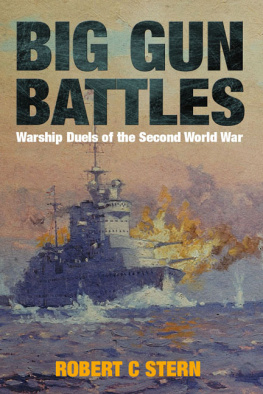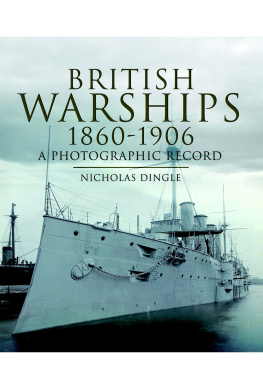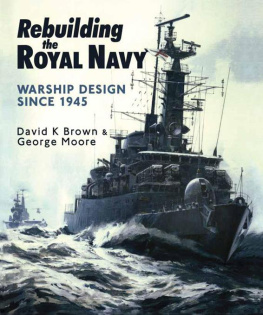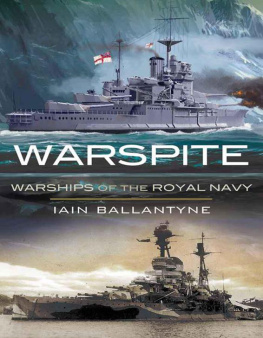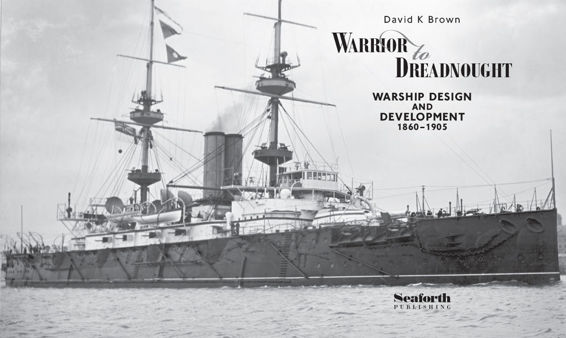
Frontisepiece:
HMS Caesar, of the pre-dreadnought eight-ship Majestic class. (US Navy)
Copyright David K Brown 1997
This edition first published in Great Britain in 2010 by
Seaforth Publishing,
Pen & Sword Books Ltd,
47 Church Street,
Barnsley S70 2AS
Reprinted 2014
www.seaforthpublishing.com
British Library Cataloguing in Publication Data
A catalogue record for this book is available from the British Library
ISBN: 978 1 84832 086 4
EPUB ISBN: 978 1 78383 019 0
PRC ISBN: 978 1 78346 786 0
First published by Chatham Publishing 1997
All rights reserved. No part of this publication may be reproduced or
transmitted in any form or by any means, electronic or mechanical,
including photocopying, recording, or any information storage and
retrieval system, without prior permission in writing of both the
copyright owner and the above publisher.
The right of David K Brown to be identified as the author of this work
has been asserted by him in accordance with the Copyright, Designs and
Patents Act 1988.
Typeset and designed by Tony Hart, Isle of Wight
Printed in China
Contents
Foreword and Acknowledgements
W ARRIOR REPRESENTED the ultimate technology of 1860 but, in the next 45 years, her single screw, iron hull and thin, soft armour and her inefficient machinery were superseded by steel hulls, shaped by scientific experiment and driven by turbines, hardened steel armour and guns which could reach to the horizon. The theory of naval architecture had advanced to the point where every part was shaped and sized with understanding and usually by calculation rather than by judgement.
This book follows my earlier work Before the Ironclad and deals with developments in the design of the ship, including its protection and its engines, though it is not a full history of marine engineering; guns, their projectiles, and other weapons will be discussed only briefly in the light of their effect on the ship. The emphasis is on the development and application of innovative technology rather than on describing each and every ship in detail. A few tables of data are included for comparison but for full information the reader must turn to reference books such as Conways All the Worlds Fighting Ships 1860-1905. The text will concentrate on the battleships which were usually the most advanced ships, although there was much of interest in the smaller classes where, sometimes, a new idea or a new type of engine would be tried first. In photograph captions, the date given for a ship is that of its launch, unless otherwise specified.
The text is, of course, the view of someone who has designed real ships and had experience in reconciling the conflicting views of individuals and of departments. I hope that, in consequence, my comments on the great designers will be sympathetic, understanding and only critical in the most proper sense. The most complete definition of Design is that given by Fielden in 1963:
Engineering design is the use of scientific principles, technical information and imagination in the definition of a structure, machine or system to perform specified functions with the maximum economy and efficiency.
Creative ship design is the art of putting together many specialist technologies, of keeping many balls in the air at the same time. A designer will usually work with three parameters simultaneously whilst keeping some five or six more in mind. It is a team sport:
The Irregular Verb To Design.
I create,
You interfere,
He gets in the way,
We co-operate,
You obstruct,
They conspire (written by the author whilst head of preliminary design)
A book can only give an imperfect description of design since each topic is dealt with in turn and hence the text must jump frequently from one subject to another. The treatment is roughly chronological but it will often be necessary to follow some particular topic to its end. Where appropriate, subtitles contain dates for the section.
The main issue for much of the period was stability, still not well understood today, which I have tried to explain painlessly using generalisations in the text and a slightly more detailed treatment in an appendix. The Royal Navy was not involved in a major war during the period of this book and there were few elsewhere involving large, modern fleets. The actions which did take place were studied carefully and these studies were supplemented by full-scale trials. Such studies and trials had a major influence on design and will be described in detail.
Good designs develop at the same time as the statement of the role as the chicken and the egg but a clear idea of the role of the ship was sadly lacking for much of the period, whilst funds were usually very scanty. As Admiral Fisher was to write:
Strategy should govern the types of ships to be designed. Ship design, as dictated by strategy, should govern tactics. Tactics should govern the details of armaments.
The Naval Defence Act provided the funds from 1897 and White, probably the greatest designer of all time and a superb manager, provided the ships and the organisation to build and support them. His first battleship design, Royal Sovereign, was a major advance and further refined in Renown. The similarity in style of his later ships concealed major advances in armour, guns and structure and the success of his ideas was demonstrated in the battles of the Russo-Japanese war. The loss of the Victoria led to improvements in watertight integrity.
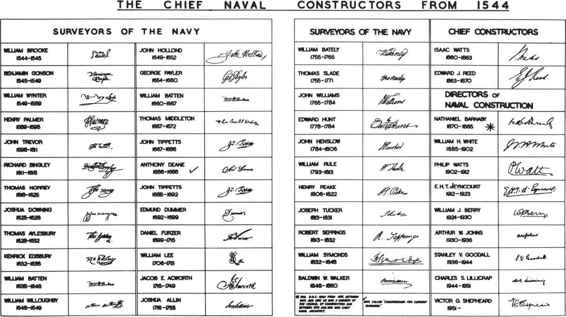
The title of the chief designer changed several times: they were all great men.
Unless the title is important, I will generalise as the Director. In most cases they made their reputation before reaching the top, in their mid-40s, credit for their contribution going to the then Director. However, the Director was responsible, shown very formally when he signed the building drawings. These great designers owed much to their staff and frequently failed to acknowledge such help. Where possible, I have tried to rescue these men from obscurity and show their contribution. I have also tried to record the achievements of engineers of other specialisations.
The naval officer of the period, and the Board of Admiralty in particular, are usually portrayed as reactionary, opposed to all new technology. This impression is discussed in the last chapter where it is suggested that it is only true, if at all, to a very limited extent. The enthusiast will always see any opposition or even a pause for thought as reaction and obstruction, as the author well knows from his own experience pushing the case for hovercraft and hydrofoils.
Comments based on the authors experience, with hindsight, will be found, mainly as footnotes. Ship design is fun; I have included a few incidents to justify that statement.
Acknowledgements
I am grateful to the following individuals for advice, material, helpful advice or criticism. Messrs J Brooks, J D Brown, J Campbell, A Holbrook, W J Jurens, Dr A Lambert, S A Lilliman, Dr A R J M Lloyd, D Lyon, G Maby, I McCallum, G Moore, Rear-Admiral R Morris, Dr J R Reckoner, J Roberts, A Smith, Professor J Sumida. I am grateful to the Bath Public Library, the Royal Institution of Naval Architects (Secretary J Rosewarn) and the libraries of Bath University, Washington Navy Yard and the Ministry of Defence and their staffs for tracing material. The late David Topliss, Guy Robbins and Graham Slatter of the Ships Plans Department of the National Maritime Museum have made available the Ships Covers which are such an important source and provided the plans.
Next page
